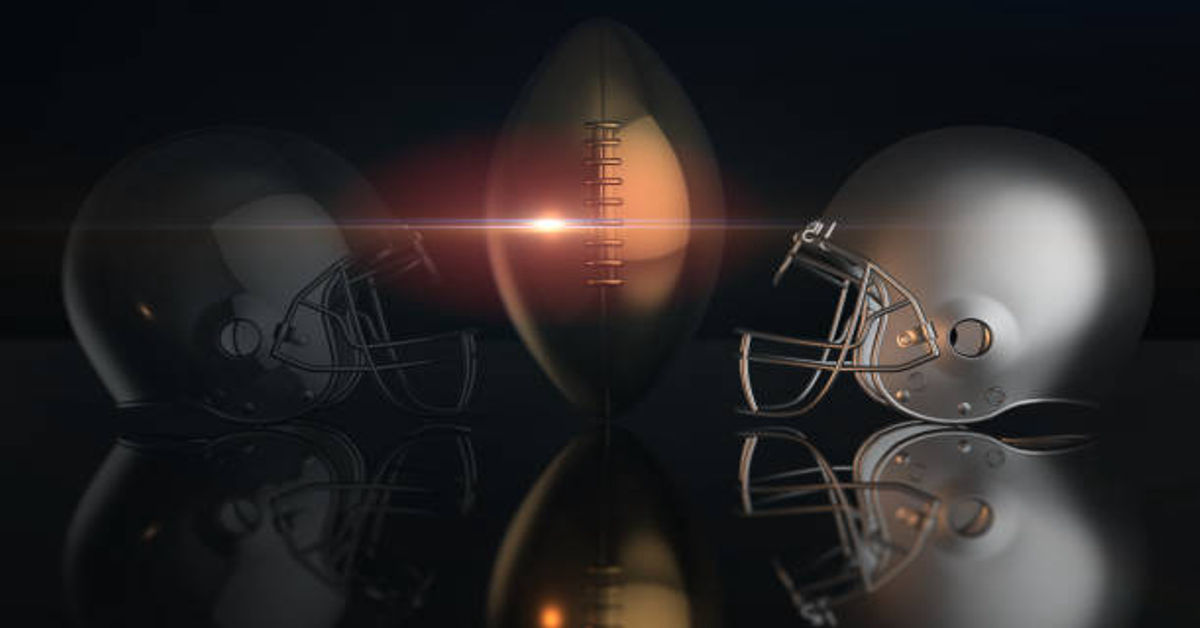College football bowl projections have become one of the most anticipated elements of the college football season, especially as programs near the final stretch and media outlets, analysts, fans, and betting communities begin speculating about where teams are likely to land during postseason play. Bowl projections are an estimate or forecast of which teams will qualify for which postseason bowl games based on ongoing season performance, conference standings, national rankings, historical tie-ins, and expert interpretation of selection rules. While bowl matchups are not officially confirmed until committee decisions are finalized at the end of the regular season and conference championship week, projections help shape the conversation, drive fan engagement, influence travel planning, impact sports betting markets, and establish a sense of national narrative on which teams are succeeding or falling short of expectations. This extensive article explores the history of bowl projections, their significance, the current structure of the bowl selection ecosystem, the logic behind forecasting models, factors that influence projections, examples of projection outcomes, how analysts differ in methodology, and the future of projecting bowl selections in an evolving college football landscape.
History and Origins of Bowl Projections
To understand projections, one must appreciate the history of bowl games themselves. College bowl contests originated in the early 20th century as single postseason exhibition games that aimed to promote tourism in warmer states such as California and Florida during winter. The Rose Bowl was the first major game, and others followed as the sport grew. For decades, bowl invitations were determined by direct negotiations between bowl committees and school administrators or by contractual tie-ins with specific conferences. The media and fans could only estimate possibilities, and bowl projections emerged informally through sports columnists and regional newspapers that attempted to predict postseason matchups before official announcements.
With television expanding coverage in the mid -20th century, bowl games became more lucrative and significant as indicators of program prestige. By this point, projections became a yearly tradition among sportswriters trying to determine not only which team might be invited but also which bowls were likely to offer invitations based on revenue, rankings, and bowl representatives’ behavior. The introduction of the Bowl Championship Series (BCS) system in 1998 increased the importance of computerized rankings and selection logic, leading to even more interest in forecasting how the formula would shake out. When the College Football Playoff (CFP) system replaced the BCS, projections evolved once again, now also estimating semifinal placements and playoff rankings. Today, projections are a key part of the cultural fabric of college football and an analytical field in their own right.
Understanding What Bowl Projections Are
Bowl projections are a forecast designed to estimate where each eligible college football team will play its postseason bowl game. The goal is to predict matchups before official bowl selection announcements are made. These predictions rely on a wide range of data inputs including win-loss records, remaining schedules, mathematical modeling, expert opinion, historical trends, and the rules governing bowl assignments.
Projections vary in detail. Some analysts simply assign the highest-ranked eligible teams to the biggest bowl games based on rankings. Others create statistical dominance ratings, simulate remaining games, or graph out tiebreaker possibilities to account for conference allocations. The most detailed projections consider not only team performance but also:
- Conference championship scenarios
- CFP committee tendencies
- Bowl host wishes and regional ticket sales potential
- Probabilities of fan travel turnout
- Television market desirability
- Traditional rivalries
- Strength of schedule
- Margin of victory
- Historical committee behavior
Because many variables remain uncertain until late in the season, projections often change weekly. For example, an unexpected upset can radically alter a conference champion projection, which reshuffles every bowl spot associated with that conference.
Why Bowl Projections Matter
While some fans view projections as mere entertainment, they have practical and strategic importance for many audiences. Fans use projections to determine whether traveling to postseason games might be feasible, especially if tickets and accommodations must be reserved early. Athletic departments and universities monitor projections to estimate their postseason exposure, expected revenue share, television appearance value, and the potential recruiting momentum a bowl appearance could generate. Sports bettors use projections to analyze odds, evaluate long-term bets, or anticipate future betting lines.
Media companies publish bowl projections weekly to drive engagement, as fans are extremely invested in knowing where their teams might stand. Meanwhile, projections help shape a national narrative by defining which teams are considered playoff contenders and which are slipping from elite status. Broadcasters often use projections in televised game coverage to emphasize the stakes of each matchup, particularly late in the season. For conferences, projections influence expectations about how many bowl slots they may fill, which affects conference ratings and public perception of strength.
How Bowl Selections Work
To understand projections, one must understand the selection system. College football bowl games operate under a layered decision-making structure that includes contractual tie-ins, postseason committee selections, conference placements, and ranking outcomes. The CFP Selection Committee determines which four teams play in the national playoff semifinals. These are the two “New Year’s Six” bowls designated as semifinal hosts for that season. The remaining New Year’s Six bowl matchups are also assigned by the CFP committee according to criteria such as conference champions and highest-ranked available teams.
Remaining bowl games (those outside the New Year’s Six) are governed primarily by conference tie-ins. For example, certain bowls require a matchup of specific conferences such as SEC vs Big Ten, ACC vs Pac-12, or Big 12 vs SEC. Within each conference, assigned bowls pick teams in order of pecking preference based on standings. However, selection is rarely as simple as “team ranked highest goes to the best bowl,” because conferences, bowl representatives, television networks, and selection committees may consider ticket sales, location, travel interest, and competitive attractiveness.
Additionally, some bowls may trade selection priority or bypass a team under extraordinary conditions. Independent teams such as Notre Dame introduce further complexity because they do not belong to a conference bowl ladder and must be slotted based on rankings and available openings.
Key Factors That Influence Bowl Projections
Accurate projections require analysts to weigh many independent variables. The most influential factors include:
1. Team Records
Teams must reach bowl eligibility (typically 6 wins). The number of wins heavily influences bowl position, but not always absolutely. A team with 8 wins in a major conference may land in a better bowl than a 10-win team from a smaller conference due to bowl tie-ins and ticket sales potential.
2. Conference Standings and Tie-ins
Each major bowl game is contractually obligated to host teams from certain conferences. This creates a structured funnel system in which analysts must assign teams based on conference ranking positions rather than pure national ranking order.
3. College Football Playoff Rankings
Since the CFP committee rankings determine playoff slots, New Year’s Six placements, and priority pecking order for high-tier bowls, projections depend heavily on ongoing ranking releases. Analysts must consider not only current rankings but how remaining games may shift them.
4. Strength of Schedule
A 10-1 team facing elite opposition may be favored over a team with the same record but weaker opponents. Strength of schedule can influence playoff placement and bowl prioritization.
5. Conference Championship Outcomes
Projections must account for championship game probabilities. If an underdog unexpectedly wins a conference championship, that team may claim an automatic high-tier bowl berth over the previously projected favorite.
6. Injuries and Late-Season Trends
Key player injuries can change a team’s expected win probability significantly. Similarly, some teams peak late in the season while others collapse. Projections attempt to anticipate such trends.
7. Bowl Game Marketability
Certain bowls may prefer teams with large fan bases, high TV draw, strong tradition, or proximity to the bowl site.
Table: Key Elements in Bowl Projection Models
| Category | Description | Impact on Projections |
|---|---|---|
| Team Record | Win-loss performance during the season | Primary qualification for bowl eligibility and ranking position |
| Conference Tie-ins | Contractual bowl assignments for each league | Determines which bowls select teams based on conference standings |
| CFP Rankings | Official rankings from the playoff committee | Directly influence playoff and New Year’s Six bowl selection |
| Strength of Schedule | Quality of opponents played | Affects committee decisions and ranking movements |
| Championship Games | Decides automatic playoff and major bowl bids | Sudden shifts in projection accuracy |
| Fan Base Marketability | Travel and broadcast potential | Bowls may select teams based on revenue factors |
| Injuries and Late Results | Changes in team performance outlook | Adjusts forecasting models late in the season |
How Analysts Create Bowl Projections
Different analysts employ varying methodologies to create projections. The approaches generally fall into one or more of the following categories:
1. Statistical Simulation
A computer model may simulate thousands of season outcomes using data such as team efficiency ratings, win probability metrics, injury adjustments, and historical stability trends. The output predicts likely final standings and bowl assignments.
2. Human Committee Prediction Analysis
Some projections are based on interpreting the behavior and values of the actual CFP committee. Analysts evaluate historical committee preferences such as:
- Rewarding tough schedules
- Emphasizing head-to-head wins
- Prioritizing conference champions
- Penalizing mediocre late-season losses
3. Game-by-Game Forecasting
Analysts predict the remaining games manually, determining final standings and bowl results based on expected wins and losses.
4. Composite Models
Most major media outlets use hybrid systems combining statistical modeling, committee interpretation, and expert editorial judgment. For example, one analyst may model likely standings while another overlays conference tie-in rules to produce projected matchups.
How Bowl Projections Affect Fans and Programs
Fans follow projections to gauge how excited they should be about postseason travel and bragging rights. A fan whose team is projected for a prestigious New Year’s Six bowl might feel energized and proud, while projection deterioration can feel like a disappointment even before official results are confirmed.
For athletic departments, bowl projections inform budget planning because bowl games generate revenue shares, ticket allocation responsibilities, and operational expenses. A higher-tier bowl often brings greater financial reward, better exposure for the institution, and an improved recruiting pitch.
Coaches also track projections because the prestige of postseason outcomes can affect contract negotiations, job security, and public perception. A coach projected for a top bowl may enter the postseason with an enhanced career profile, while one projected for a minor bowl despite high preseason expectations may face pressure from alumni and boosters.
Bowl Projections and Media Influence
Media outlets such as sports networks, digital news platforms, podcasts, and fan blogs publish weekly projections for the purpose of generating ongoing discussion. They break down which teams are rising, which are falling, who controls their own destiny, and who needs outside help. Because college football fans consume media heavily during the season, projections become a major storytelling device. A team may shift from projected No. 3 playoff seed to barely hanging on at No. 6 after one close loss, and this narrative fuels debate, viewership, and online traffic.
Media influence also affects perception more subtly. When many projection systems begin consistently placing a team in the playoff range, fans and pundits start considering that team legitimate. This can shape opinion, betting lines, polling behavior, and committee perception indirectly.
Future of Bowl Projections
As college football continues to evolve with playoff expansion, realignment, and increased data analytics, projection systems are likely to become more sophisticated. Playoff expansion will introduce more postseason slots, which will both complicate projections and increase fan interest in modeling.
Machine learning will likely play a larger role in simulation-based modeling, especially as more real-time player performance data, injury information, and probabilistic matchup tools become available. Media interaction is also shifting as fans demand projections not only through television or articles but also through interactive dashboards, fan prediction games, and AI-powered match assessment.
One significant future development is whether traditional bowl games will maintain their historical relevance as playoff systems expand. Even if their relevance shifts, projections will remain culturally significant because fans enjoy predicting results, comparing expert models, and engaging in passionate debate about college football postseason destiny.
Conclusion
Bowl projections are more than just entertainment—they reflect an intricate blend of statistics, committee behavior interpretation, historical understanding, conference mechanics, travel economics, and predictive modeling. They give fans a way to track postseason expectations in real time and offer media outlets a compelling narrative framework for each week of the season. Meanwhile, universities, players, and coaches recognize that even anticipated matchups influence reputation and momentum. As college football evolves with technological advances, playoff expansion, and changing bowl structures, projections are certain to remain an integral part of the sport’s culture, ensuring that debates, predictions, and analytical breakdowns continue to energize fans year after year.
FAQs
1. What are bowl projections?
Bowl projections are early predictions that estimate which college football teams will play in which postseason bowl games before official selections are finalized.
2. How are bowl projections calculated?
Analysts use data including win-loss records, rankings, conference tie-ins, strength of schedule, expert opinion, and predictive modeling to forecast bowl placements.
3. Do bowl projections affect actual committee decisions?
Projections do not directly change committee decisions, but they influence public perception, media narratives, and fan expectations throughout the season.
4. Are bowl projections accurate?
They are often accurate late in the season, but unpredictability—such as late losses, upsets, or injuries—can cause dramatic shifts from week to week.
5. Why do fans follow bowl projections?
Fans use projections to understand postseason possibilities, estimate team prestige, plan travel, and compare their team’s national standing with rival programs.











